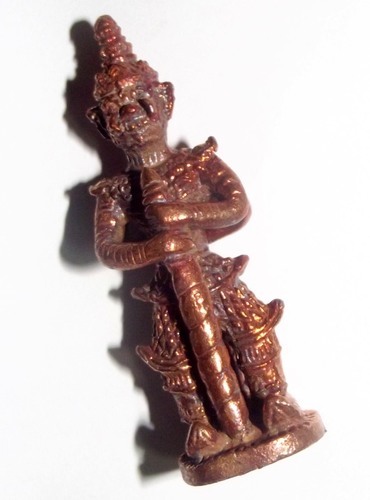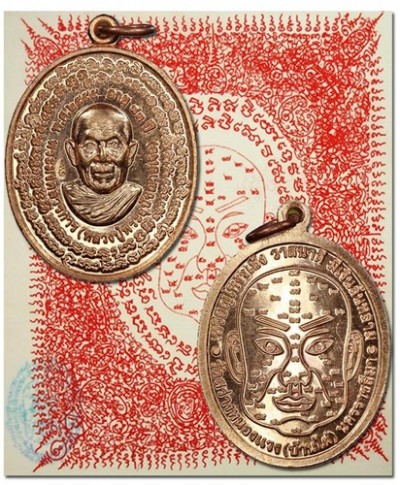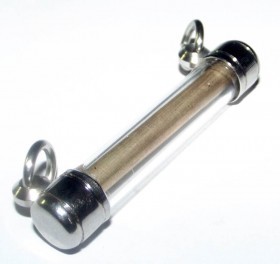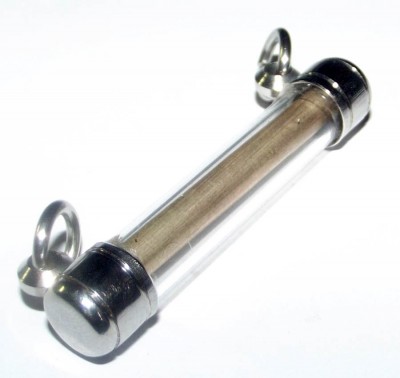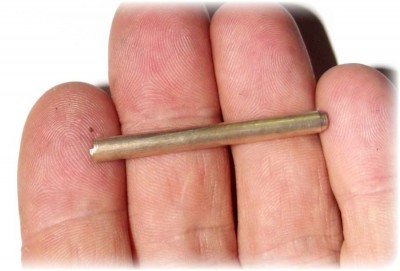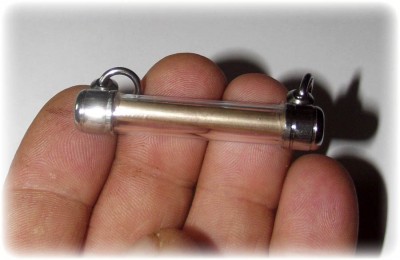Luang Por Tan Jao Khun Juea empowered the coins and yantra cloths with invocations of the spells for the ‘Five Mountains’ and ‘Three Palaces of Prosperity’.
These invocations, when combined, complete the formula for successes in all professional, social, and speculative ventures. The empowerment was completed with the wicha Mongkut Pra Putta Jao (‘Buddha’s Crown’).
The coins were made in two different sacred metals: (1) nuea tong chompoo (a sacred copper alloy with pink gold), and (2) nuea nava loha (nine sacred artifact metals). Both versions come with either a red, or black yantra cloth.

The front face of the amulet has the image of Luang Por Tan Jao Khun Juea, and the rear face features the face of the Ngoe Heng deity.
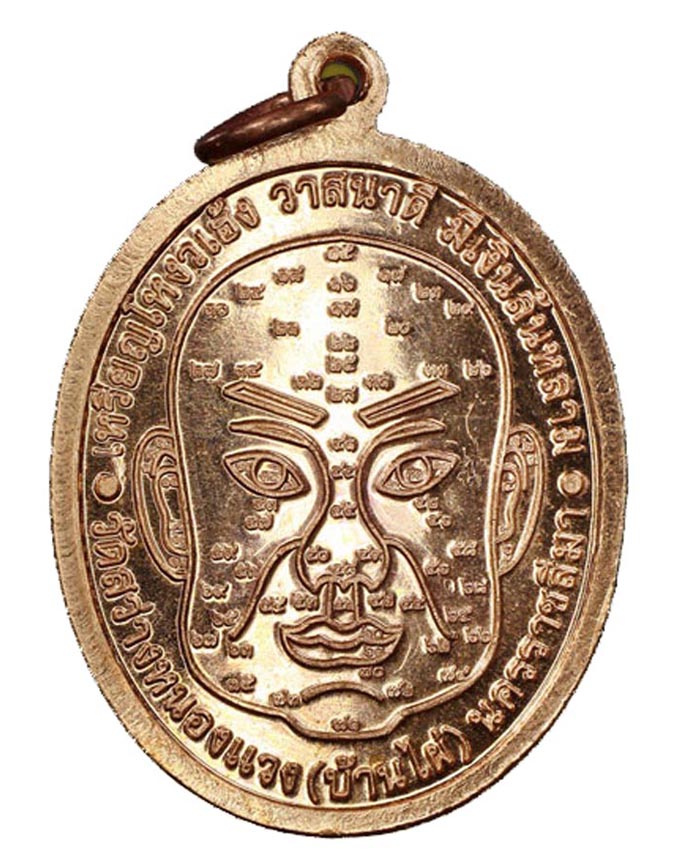
Pha yant Ngoe Heng
The pha yant and Ngoe Heng coin can be worn or carried in the purse or pocket, or kept on the office table or cash till. The coin and cloth work best when used in combination, you can even wrap the coin in the cloth if wished. There are some ritual bucha practices necessary for self empowerment and activation of the wicha with your horoscope.
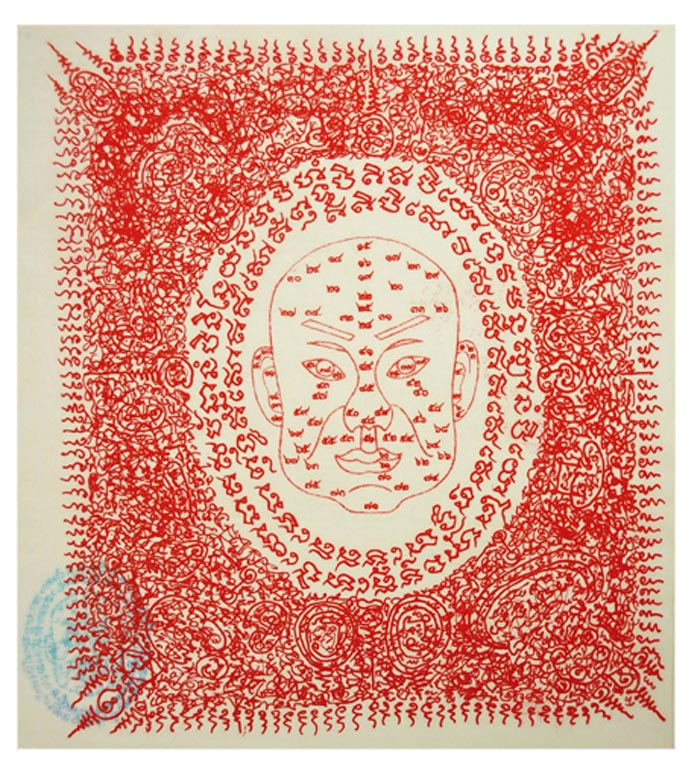
The pha yant is 21 cm high x 19 cm wide; color can vary (red or black).
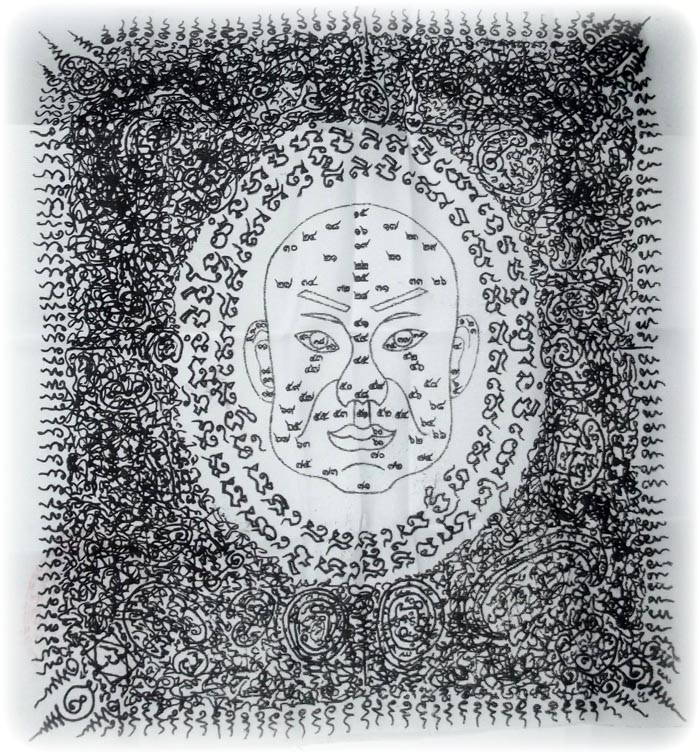
Bucha method for Ngoe Heng Wicha pha yant and coin
The pha yant (cloth) can be used to wrap the coin, or as a double flanked wicha to keep at home on the wall, and carry the coin, to ensure prosperity in the home and out at work.
Light five sticks of incense and make three prostrations to the Triple Gem (Buddha, Dhamma,Sangha), one’s guru, and parents.
Spread the yantra cloth out flat with your hand, and take a black lead pencil, and trace circles around the number of your current age that is inscribed upon Ngoe Heng’s face (numbers are in Thai). Or, you can trace as many circles as the years of your age around Ngoe Heng’s face. Hold your heart and mind still and focused whilst doing this.
Then chant the Maha Namasakara three times:
Namo Tassa Bhagavato Arahato Sammaa Sam Buddhassa,
Namo Tassa Bhagavato Arahato Sammaa Sam Buddhassa,
Namo Tassa Bhagavato Arahato Sammaa Sam Buddhassa.
Next, focus your mind and pray: “I (say your name and surname), who was born on (birthday date and year), ask to imprint my horoscope and line of fate within this yantra, and ask for blessings through the powerful attainments and merits of the Buddha, Dhamma and all the enlightened arahants, guru teachers, and the lineage of Luang Phu Taw, Luang Phu Noi, and Luang Phor Juea. Please help my woeng heng to be transformed into Ngoe Heng of the lucky and wealthy mystic dragon throne. May all my professional ventures be successful and prosperous, and all my undertakings bring great Fruits. May the power of Ngoe Heng pull the lucky forces of all directions of the universe to orbit around my star sign and focus lucky blessings of wealth and prosperity”.
The wicha Ngoe Heng is said to contain five mountains of blessings and three palaces of fulfillled wishes.
The Five Mountains of Blessings
-
The ‘Forehead Mountain’ brings the blessing of fame and honor, status and power;
-
The ‘Chin Mountain’ brings the blessing of success to your children and grandchildren;
-
The ‘Left Cheek Mountain’ brings the blessings of mercy from superiors;
-
The ‘Right Cheek Mountain’ brings the blessings of higher promotion;
-
The ‘Nose Mountain’ brings the blessing of prosperity and wealthy treasures to a happy family and secure household.
The 3 Palaces of Wishes
- The ‘Palace of the Sky’ brings the blessing of intelligence and good fortune;
- The ‘Palace of Humans’ brings the blessing of great riches and collateral treasures;
- The ‘Palace of Earth’ brings prosperous business and success in all ventures.
View these amulets in store here:
and


